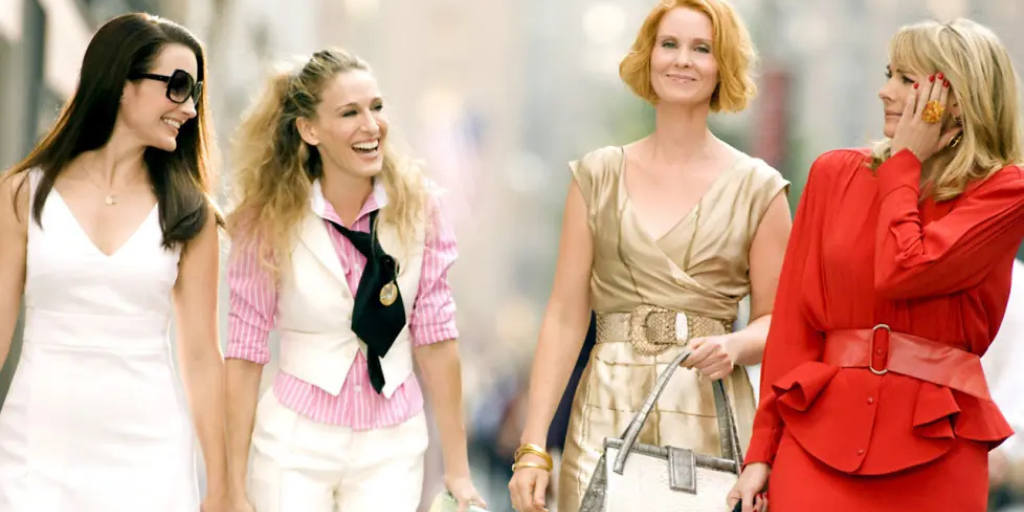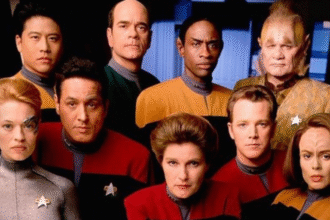Exploring the Complex Legacy of Sex and the City in Modern Contexts
- The show defined a new narrative for women’s experiences.
- Critiques reveal cultural limitations and social blind spots.
- Its legacy invites discussions on diversity and representation.
When Sex and the City debuted in 1998, it erupted onto the television scene with a daring portrayal of women’s lives in New York City that hadn’t been seen before. Centering on four women balancing love, sex, friendship, and career, the show opened a space for candid conversations about female sexuality, independence, and urban life.
Its lead characters Carrie, Miranda, Charlotte, and Samantha became cultural icons, each embodying different yet relatable facets of modern womanhood.
The show rewrote the rules of what television could explore about women’s inner lives and relationships. For many viewers, especially women, it was freeing to watch women openly discuss sex and pleasure, ambitions, and vulnerabilities.
Unlike the typical male-centered narratives dominating TV, Sex and the City placed female voices front and center, celebrating friendship over romance and career pragmatism alongside emotional complexity.
This groundbreaking stance sparked a lasting cultural impact. It shifted dialogue in popular culture and influenced fashion, language, and attitudes.
The show is quoted in countless conversations about “finding yourself,” navigating love in your 30s and 40s, and embracing life’s contradictions. It celebrated flawed, messy, and authentic experiences, offering a vibrant, if sometimes idealized, mirror to women’s evolving realities.
Also Read: Columbo’s Casting Curveball That Nearly Changed TV’s Greatest Detective
However, beneath this cultural milestone lies a complicated legacy. The very elements that made Sex and the City revolutionary also exposed tension and contradictions that demand closer scrutiny today.
The Uncomfortable Truths: Limitations and Problems
While lauded for its boldness, Sex and the City has substantial flaws that frequently come into focus in modern reassessments. The show primarily centers on affluent, white women living in Manhattan, sidelining racial and class diversity in a city known for its vast cultural mosaic.
This lack of representation is more than an omission; it reinforces a narrow version of womanhood that excludes many voices, perpetuating systemic erasure.
Critics have pointed out that the show’s portrayal of sexuality and feminism often aligns with a particular brand of post-feminism, one that emphasizes individual freedom mixed with consumerism and traditional beauty standards.
Characters like Samantha, despite her sexual liberation, are sometimes viewed through the lens of stereotypes that reduce complex identities to caricatures. This tension between empowerment and objectification creates uneasy contradictions that complicate the show’s feminist claims.
Additionally, some narrative choices and attitudes reveal dated gender norms and social attitudes regarding relationships, body image, and race. For instance, storylines occasionally trivialize serious issues or rely on humor that doesn’t always age well, leading to discomfort for some viewers revisiting the show today.


These elements highlight the cultural context of the late 1990s and early 2000s, reflecting societal blind spots that contemporary audiences are less willing to overlook.
The recent revival, And Just Like That…, attempts to engage with these critiques with mixed success. It introduces more diverse characters and addresses topics like aging, queerness, and racial identity. Yet, it has faced its own share of backlash and inconsistencies, showing just how difficult it is to reconcile the legacy of the original with present-day expectations.
Why It Matters: Understanding the Full Picture
Acknowledging Sex and the City’s shortcomings doesn’t diminish its importance. Instead, this recognition deepens understanding of a show that was both influential and flawed, and why it continues to matter. The series captured an era’s spirit while simultaneously revealing the cultural limits of that moment.
For many fans and scholars, the show’s legacy invites conversations about inclusion, evolving feminism, and representation in media. It serves as a cultural touchstone for how media shapes and reflects societal norms and values.
The issues Sex and the City raises about who gets to tell stories and whose stories are kept out remain central to ongoing media criticism and discussions around diversity and equity.
Moreover, the show’s honest portrayal of women’s friendship and individuality laid the groundwork for later series to amplify more inclusive and nuanced voices. This legacy is a reminder that progress often comes in uneven steps, with trailblazers paving the way even if imperfectly.
Understanding this complex history is crucial to appreciating Sex and the City accurately, neither blindly celebrating nor unfairly dismissing it.
As conversations about media representation continue evolving, Sex and the City offers a case study in cultural change. Its fans and critics alike can learn from its contradictions, using them to demand richer storytelling that truly reflects the diversity and complexity of women’s lives.
Sex and the City remains a landmark that shaped how women see themselves and are portrayed onscreen, while inviting us to reckon with its limits honestly. Embracing that complexity allows both appreciation and critical reflection, fostering a richer cultural conversation about the past, present, and future of women’s stories.
Also Read: SNL’s Wild Disney Remix, Mr. Beast Plays Beast in Beauty Parody That Breaks the Internet
People Also Ask
- When did Sex and the City first debut?
-
Sex and the City debuted in 1998.
- What themes does Sex and the City explore?
-
The show explores themes of love, sex, friendship, career, and female sexuality.
- What criticisms have been directed at Sex and the City?
-
Critics point out its lack of racial and class diversity, and its portrayal of feminism and sexuality as aligned with consumerism and traditional beauty standards.
- What is the significance of the show’s characters?
-
The lead characters Carrie, Miranda, Charlotte, and Samantha became cultural icons, representing different facets of modern womanhood.
- How has the recent revival, And Just Like Thatu2026, addressed critiques of the original show?
-
The revival attempts to introduce more diverse characters and address topics like aging, queerness, and racial identity.
- What legacy does Sex and the City leave in terms of media representation?
-
The show invites conversations about inclusion, evolving feminism, and representation in media, serving as a cultural touchstone for societal norms and values.








